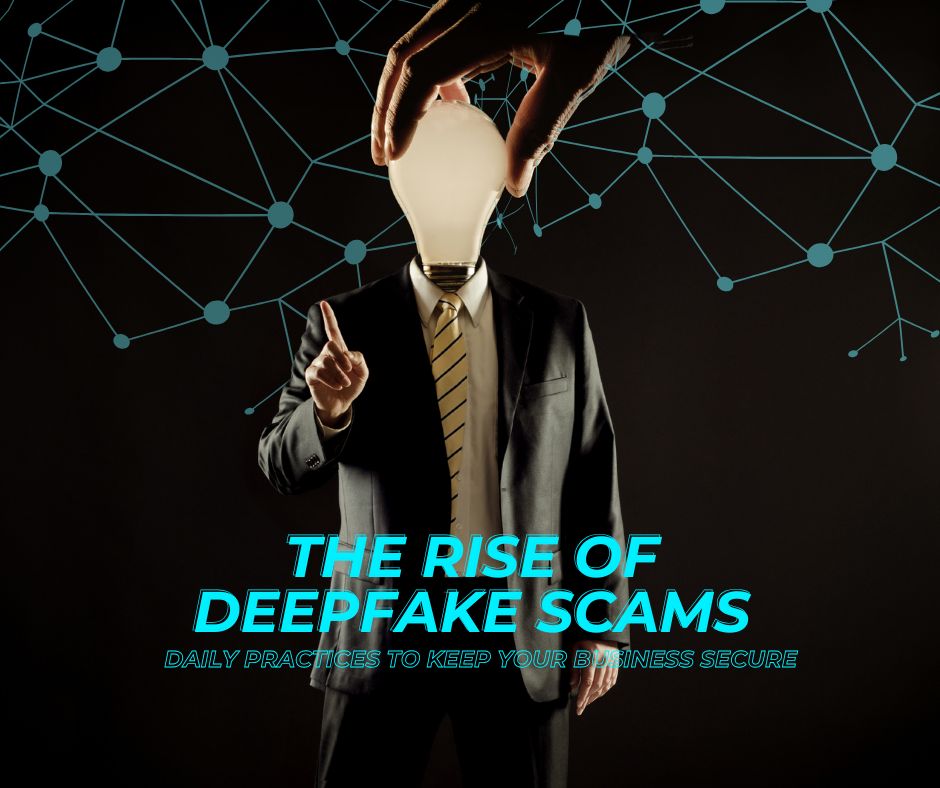
The rapid advancement of AI technology has brought about significant benefits for businesses and industries, but it has also introduced new risks. One of the most alarming emerging threats is deepfake scams, where AI-generated videos, audio, and images are used to impersonate individuals or organizations for malicious purposes. These scams can deceive employees, clients, and stakeholders, leading to financial losses, reputational damage, and data breaches. Understanding the rise of deepfake scams and implementing strategies to combat them is essential for businesses in today’s digital age.
What Are Deepfake Scams?
Deepfakes are AI-generated or manipulated media, typically in the form of videos, images, or audio, that look and sound incredibly realistic but are entirely fabricated. By using deep learning techniques, cybercriminals can create content that mimics the likeness and voice of trusted figures in a business or even public personalities. These deepfakes can be used for various fraudulent activities, including phishing, blackmail, identity theft, and financial scams.
For example, a cybercriminal might create a deepfake video that appears to show a CEO giving instructions to transfer funds or approve a sensitive business deal. The video can be convincing enough to bypass traditional security measures, tricking employees into taking actions that they would not otherwise consider. The impact of such scams can be devastating, especially as deepfake technology continues to improve.
How Businesses Can Stay Ahead of Deepfake Scams
- Educate Employees About Deepfake Technology
One of the first steps in preventing deepfake scams is raising awareness within the organization. Employees, especially those in high-risk positions such as finance or IT, should be trained to recognize signs of deepfake content. This includes scrutinizing unusual requests or communications from senior executives, looking out for inconsistencies in video or audio quality, and verifying information through alternative channels.
- Implement Multi-Factor Authentication (MFA)
Multi-factor authentication adds an additional layer of security to digital communications and transactions. By requiring employees to authenticate their identity using more than one method (such as a password and a fingerprint scan), businesses can reduce the chances of fraud even if deepfake technology is used to bypass traditional security measures.
- Use Deepfake Detection Software
Several AI-based solutions can detect deepfakes by analyzing images, audio, and videos for signs of manipulation. Integrating these detection tools into your organization’s cybersecurity infrastructure can help identify deepfakes before they cause damage. These tools can be particularly useful for verifying external communications or any media that could be used for fraudulent purposes.
- Verify Requests with Direct Communication
When a request seems suspicious—especially if it involves large sums of money, sensitive information, or other critical actions—take the time to verify the request through other means. Contact the person directly through a known phone number or email address to confirm that the request is legitimate. This extra step can prevent deepfake scams from taking hold.
- Encourage Vigilance and Critical Thinking
Encourage a culture of vigilance and critical thinking across all levels of the business. Employees should feel empowered to question and report anything that seems off or inconsistent, whether it’s a strange email, an unexpected video message, or an unfamiliar voice on the phone. By fostering an environment where employees feel comfortable challenging potential scams, businesses can reduce the likelihood of falling victim to deepfakes.
- Stay Informed About Evolving Threats
Deepfake technology is constantly evolving, and staying informed about the latest developments in AI and cybersecurity is essential. Businesses should work closely with cybersecurity professionals to stay ahead of the curve and implement the best possible security protocols. Subscribing to cybersecurity news, attending industry conferences, and collaborating with experts can help businesses anticipate and mitigate new risks.
Conclusion
The rise of deepfake scams represents a growing threat to businesses worldwide. As AI technology becomes more sophisticated, the risk of falling victim to these types of fraud will only increase. However, by educating employees, implementing strong security measures, and staying informed about the latest threats, businesses can protect themselves from the potentially devastating effects of deepfake scams. As always, being proactive and vigilant is key to maintaining security in the digital age.
